The National Museum of Territory and Sovereignty communicates the facts of and Japan’s position on territory and sovereignty. In order to enhance understandings of these issues, various additions to the displays—from antique postcards to cutting-edge exhibitions that use projection mapping and AR—have been introduced.
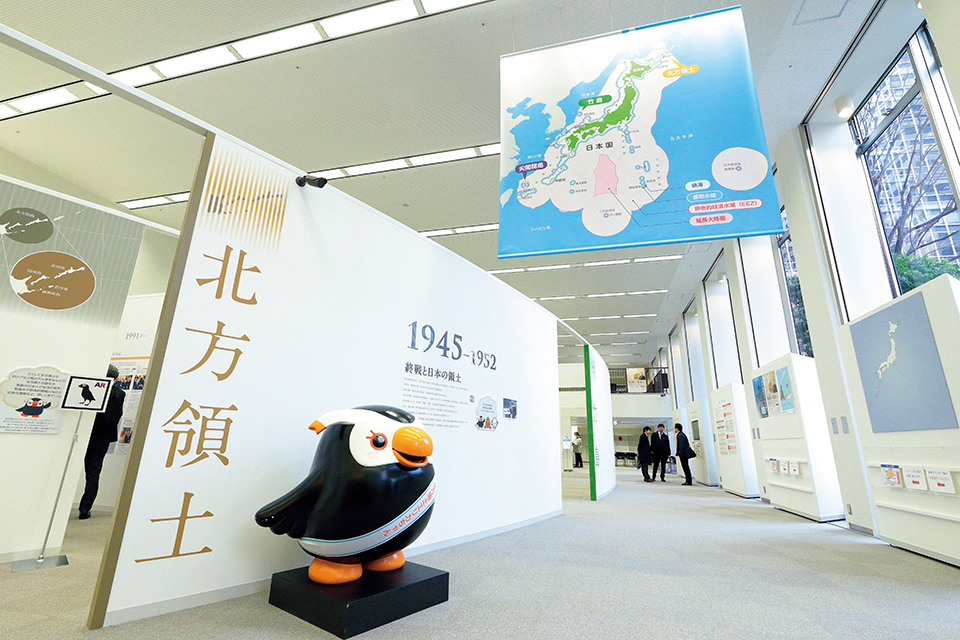
Visitors are welcomed by Erica-chan, the mascot for the Northern Territories. Admission is free. Located at 3-8-1 Kasumigaseki, Chiyoda-ku, Tokyo.
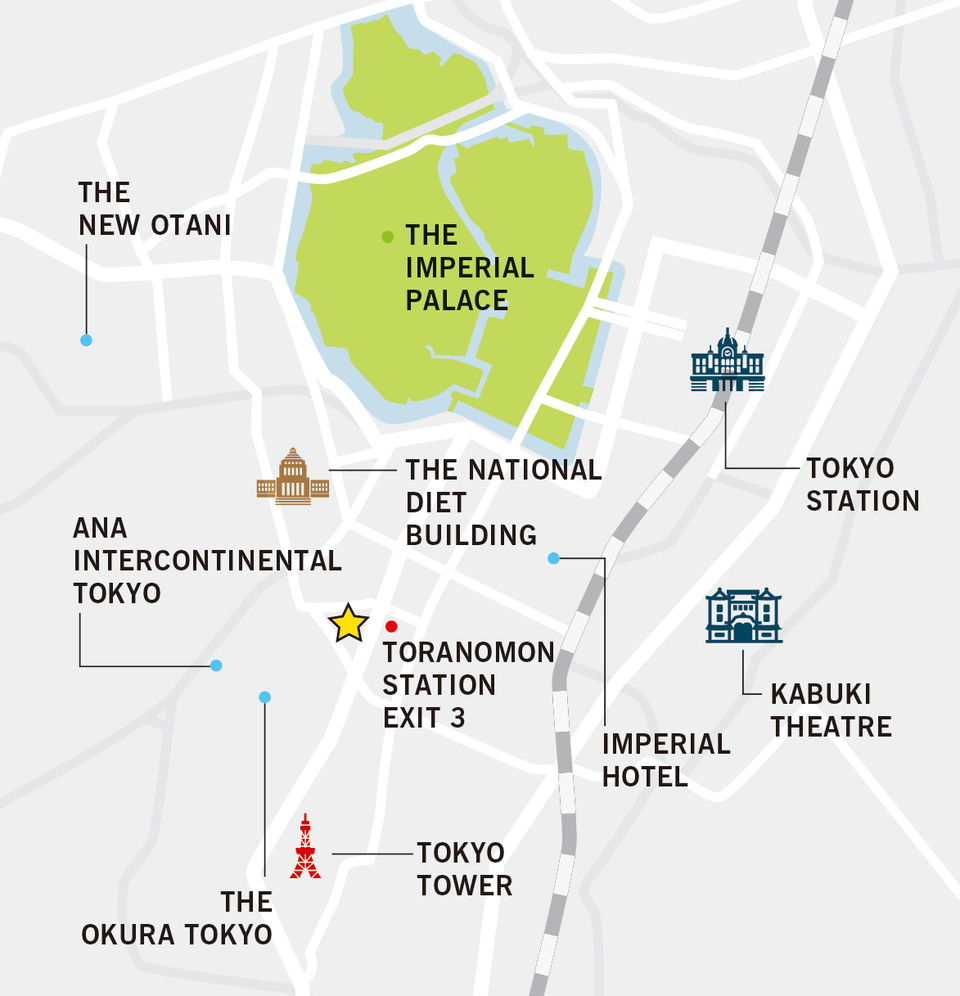
The spacious exhibition area of about 700 m2 includes three main sections for the Northern Territories, Takeshima, the Senkaku Islands and other areas. Noteworthy features include the objective evidence and the displays of the allegations made by other nations and Japan’s refutation—a perfect place to review the facts and deepen your understanding. Through the use of projection mapping and AR (augmented reality), key aspects, such as historical and present conditions on the islands, are portrayed vividly. The main contents in the Museum are available on the website. https://www.cas.go.jp/jp/ryodo_eg/taiou/index.html
The Northern Territories section has panels to introduce the history of territorial determination between Japan and Russia and the details of the negotiations between the two countries, including those held during the Soviet era. The projection mapping, which projects images onto a three-dimensional map, visualizes the process of the 1945 Soviet Union invasion and occupation of the Northern Territories. At the same time, daily commodities used by residents of the Four Northern Islands during the prewar period are exhibited, showing how the actual life of the islanders was.
The Four Northern Islands have remained occupied by Russia up until the present day, without any legal ground. The Government of Japan intends to continue to persistently negotiate with Russia, in order to conclude a peace treaty through the resolution of the Northern Territories Issue.
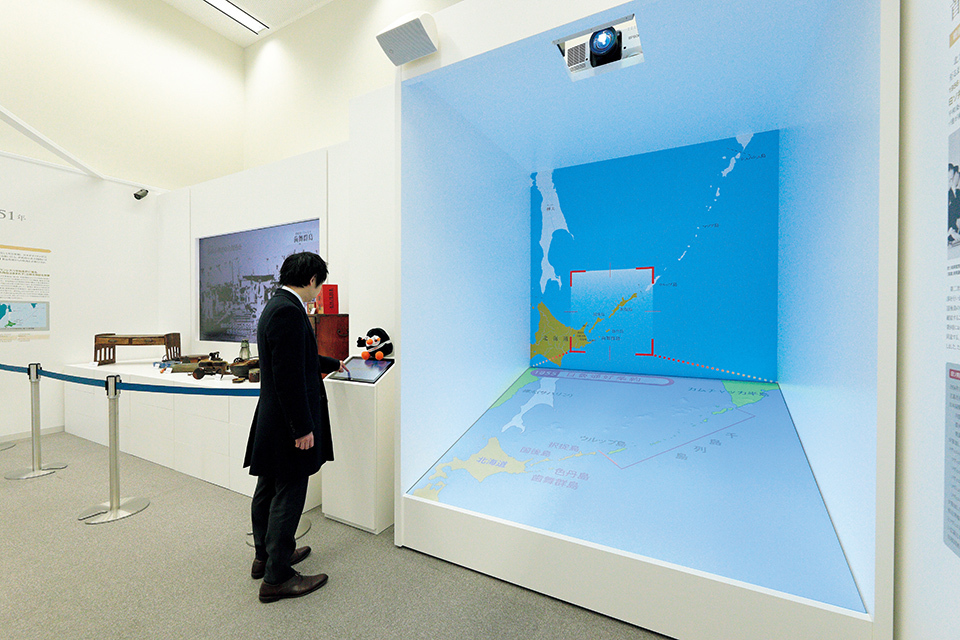
The section for the Northern Territories utilizes projection mapping, helping spectators visualize the process of the Soviet Union invasion and occupation of the Northern Territories. There are also displays showing the life of Japanese islanders before the war.
In the Takeshima section, evidential documents of Japan’s territorial sovereignty over Takeshima prior to World War II are exhibited in a clear way, together with claims made by the Republic of Korea (ROK) and Japan’s counter-arguments. In addition, there are written materials which show the recognition of the SF Peace Treaty that Takeshima is territory of Japan as well as the illegal occupation by the ROK side that is still proceeding.
Takeshima is indisputably an inherent part of the territory of Japan, in light of historical facts and based on international law, but the illegal occupation by ROK continues. Japan will continue to seek the settlement of the dispute over territorial sovereignty over Takeshima on the basis of international law in a calm and peaceful manner.
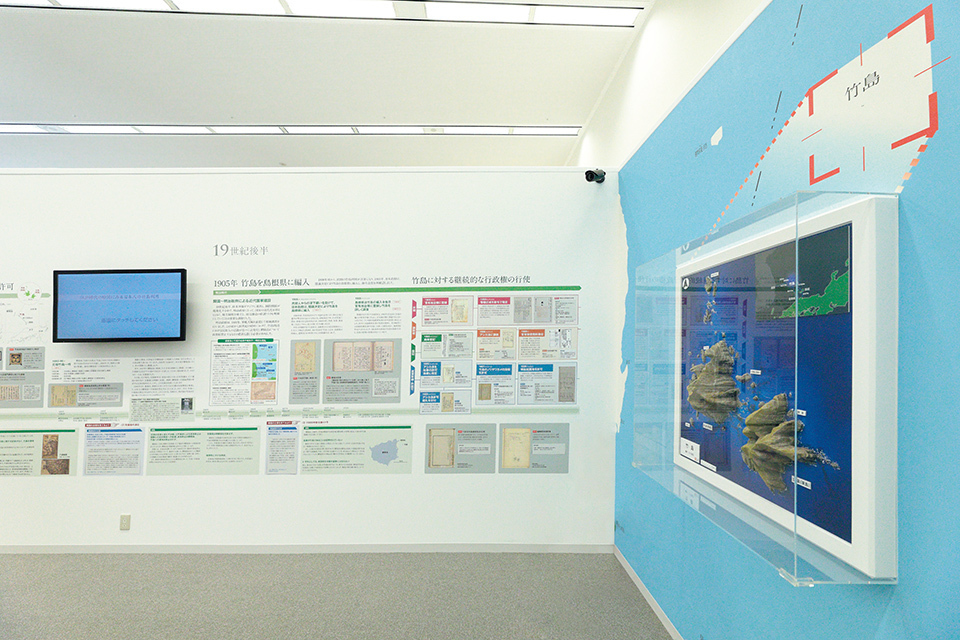
Display panels, a monitor showing video images, a diorama of the territory, and other exhibits comprise the Takeshima section. Evidence and documents substantiating the Japanese refutation are presented alongside the claims made by ROK.
In the Senkaku Islands section, panels introduce facts about the history of the incorporation of the Senkaku Islands into Japanese territory prior to World War II, and show that, after a postwar period of administration by the United States, administration rights to Okinawa including the Senkaku Islands returned to Japan. The fact that Chinese and Taiwanese claims are groundless is clarified.
There is no doubt that the Senkaku Islands are clearly an inherent part of the territory of Japan, in light of historical facts and based upon international law. There exists no issue of territorial sovereignty to be resolved concerning the Senkaku Islands. Japan will act firmly and calmly to maintain its territorial integrity.
The last display space is titled “A parting thought,” giving visitors an opportunity to pause and reflect on whether the claims of Japan or other nations are correct. This is a learning resource for gaining a better understanding of complex situations regarding territory and sovereignty and Japan’s response respecting law and order in the international community.
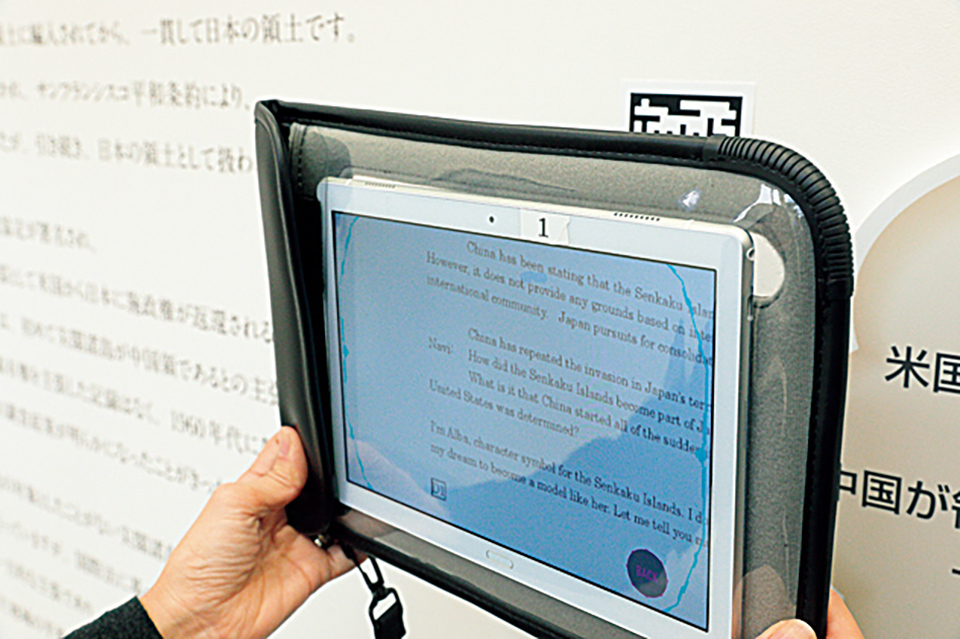
Tablet computers lent at the Museum gratuitously provide in English translation of main parts of the exhibition. Also on the tablets, Etupirka, a puffin that lives in the North Pacific Ocean, makes an appearance thanks to AR (augmented reality).
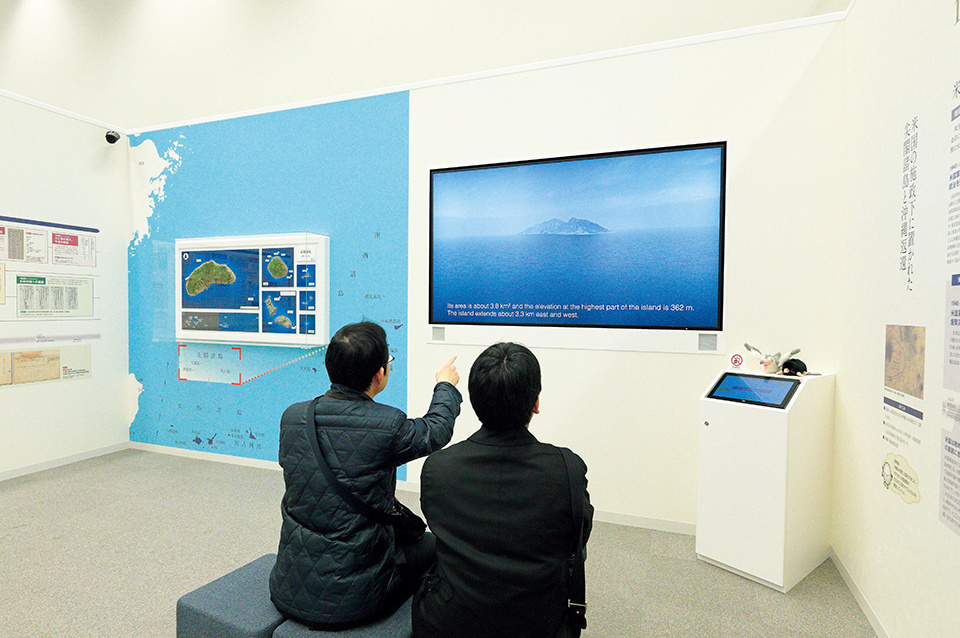
In the Senkaku section, the situation surrounding the Senkaku Islands is introduced using animated computer graphics from the perspective of the short-tailed albatross, a bird that lives on Minamikojima Island and Kitakojima Island.






























